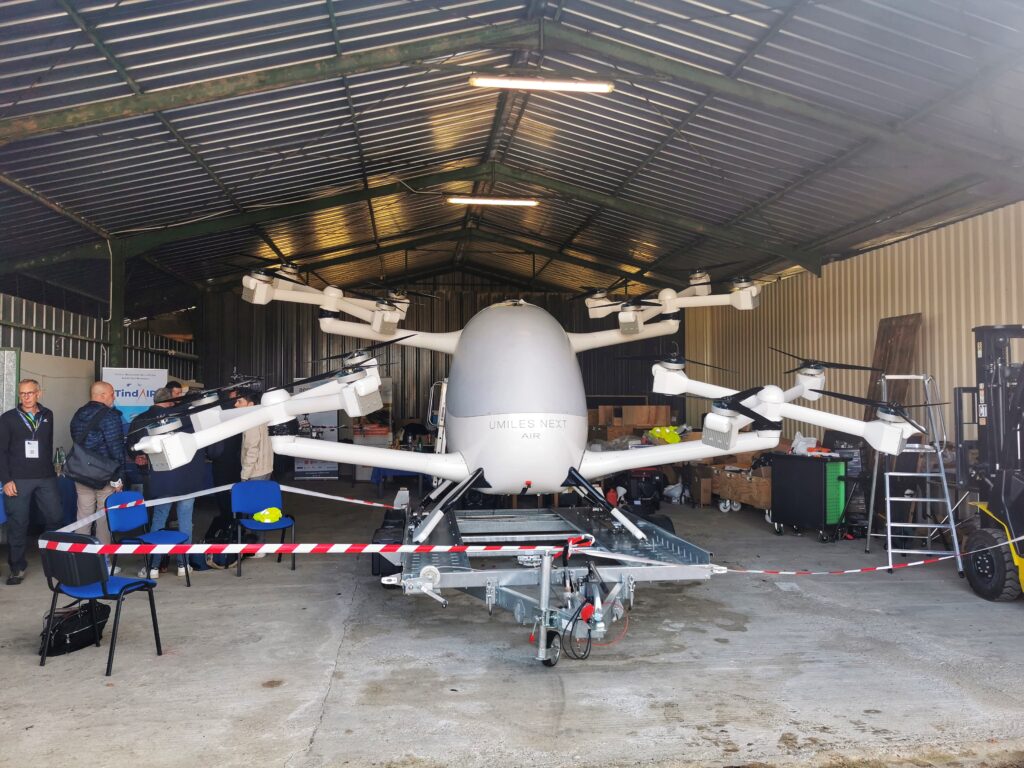TindAir is a Tactical Instrumental Deconfliction And In Flight Resolution project aiming at testing U-Space deconfliction services in live Urban Air Mobility conditions.
📍 TindAIR Consortium: Innov’ATM, Pildo Labs, Collins Aerospace, Skyports Infrastructure, SKYBIRDSVIEW, Airbus, ISSNOVA, ONERA – The French Aerospace Lab, TECNALIA Research & Innovation, Aerospace Valley, SESAR 3 Joint Undertaking
USEPE had the pleasure to visit a live demonstration in Occitanie and take part in the TindAir presentation and a Q&A.

The aim of the TindAir project is to provide U-space users with a tactical deconfliction service. As urban areas are very dense and many aircraft with different sizes and speeds will be sharing the same airspace, a service to prevent and avoid collisions is necessary.
This service includes systems and devices that detect possible conflicts and provide alerts in a timely manner. Through a safe communication link, it sends appropriate instructions to change the aircraft speed, altitude, and/or heading as needed to safely and efficiently deconflict and to guide the re-routed aircraft back to the course once the conflict is solved.
Related tasks:
- Research on emergency lending
- Assessment of cybersecurity
- Assessments on social acceptance
As part of Tactical Instrumental Deconfliction and In-flight Resolution-(TindAIR), a project for very large-scale demonstrations on urban mobility, Umiles Next’s Concept Integrity air taxi, equipped with Tecnalia’s FlyFree technology, has completed successful test flights in Toulouse, taking off from the Onera Test Field. This event represents a significant step towards the integration of this type of aircraft into the air space as part of the European TindAIR project, intended to validate the urban air traffic management system of the future with unmanned aircraft (U-space). In this demonstration, other UAVs (Unmanned Aerial Vehicles) flew alongside the air taxi to show that this new traffic element can successfully coexist in urban areas in the near future.

The TindAIR consortium operated a series of demonstrations, covering a range of representative and operational use cases, featuring a combination of crewed and uncrewed aircraft. Operational scenarios addressed existing urban needs ranging from medical emergency transport to a mix of freight and passenger flights, including extreme cases like sector saturation capacity and emergency landing. They also involved different types of platforms with various capacities and levels of automation, all sharing the same airspace volume. The regions of Toulouse and Bordeaux hosted these full-scale trials, in one of which USEPE consortium partners were personally presented.

As a result, of the above, tactical deconfliction key points include:
- Prediction of the trajectories 2 minutes in the future
- Detection of tactical conflict based on estimated trajectories
- Deconfliction algorithm automatically triggered at conflict detection:
- Use of the genetic algorithm
- First, find trajectories that solve the conflict and then optimise them
- Propose several solutions with different maneuver types
- Do not propose a solution that generates the conflict

Four types of avoidance maneuvers have been presented:
- Re-touring
- Altitude change
- Speed change
- Holding
- Alternative – emergency landing
From the USEPE perspective, the insights of the TindAir testing, demonstration, and simulations give additional room for AI deconfliction, that we test on our project.
Furthermore, as a practical live project, TindAir represents a starting point for the future with drones in our daily lives, regulating deconfliction in U-space, that might soon be applicable in cities worldwide.
We are happy to contribute as USEPE to the safety and deconfliction methods of drones, as well as exchange our thought and opinions with the sibling projects.
More information
For more information on USEPE and upcoming events visit the project website.
In case of any questions, suggestions, etc. contact Dzvenyslava Tyslyukevych and Manon Coyne.

